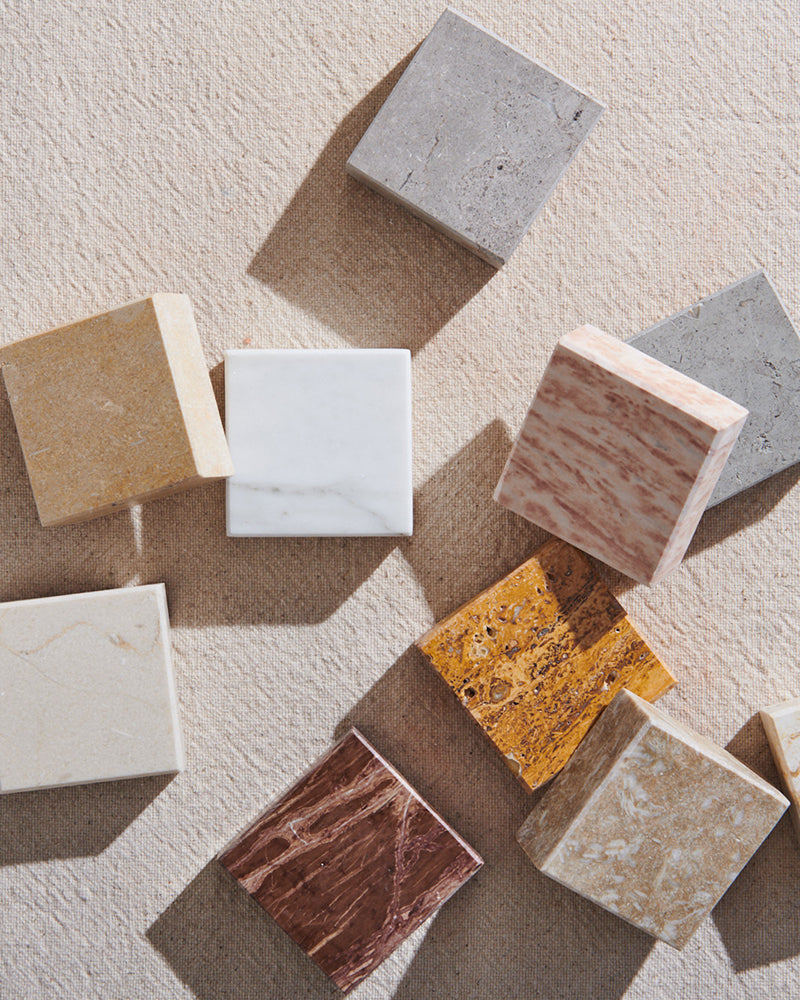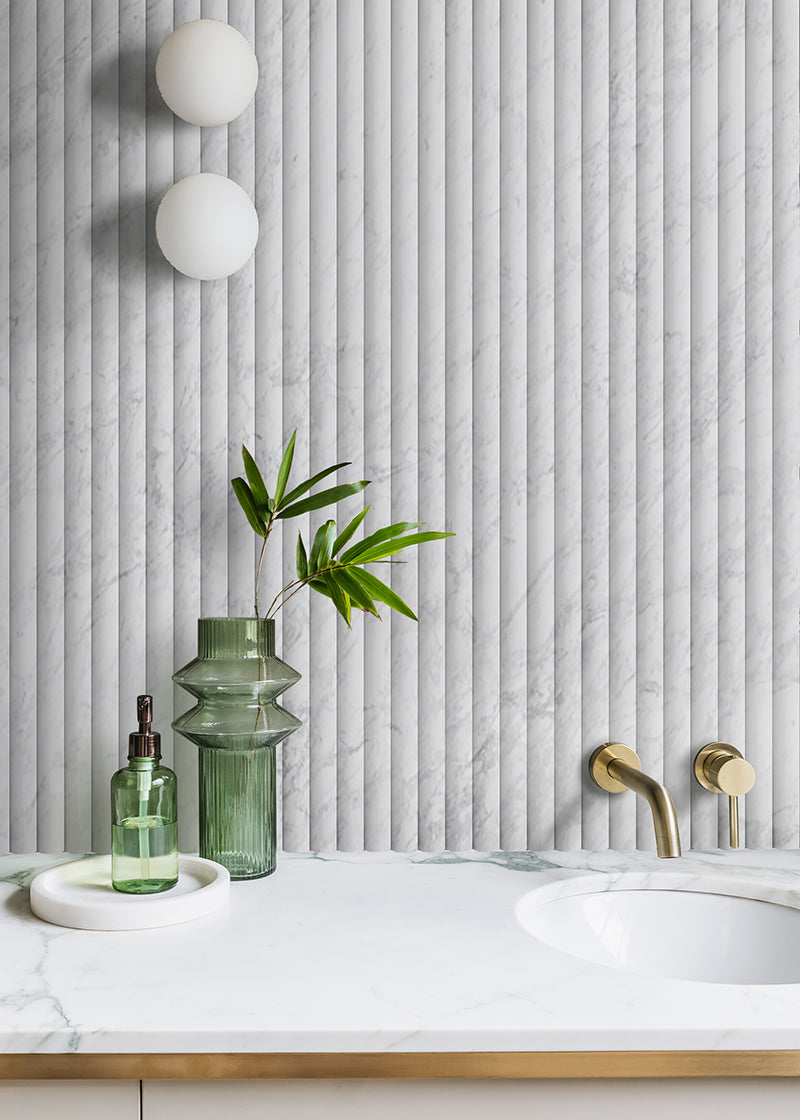which tile types are best for bathrooms
by clé tile | published: Apr 24, 2024
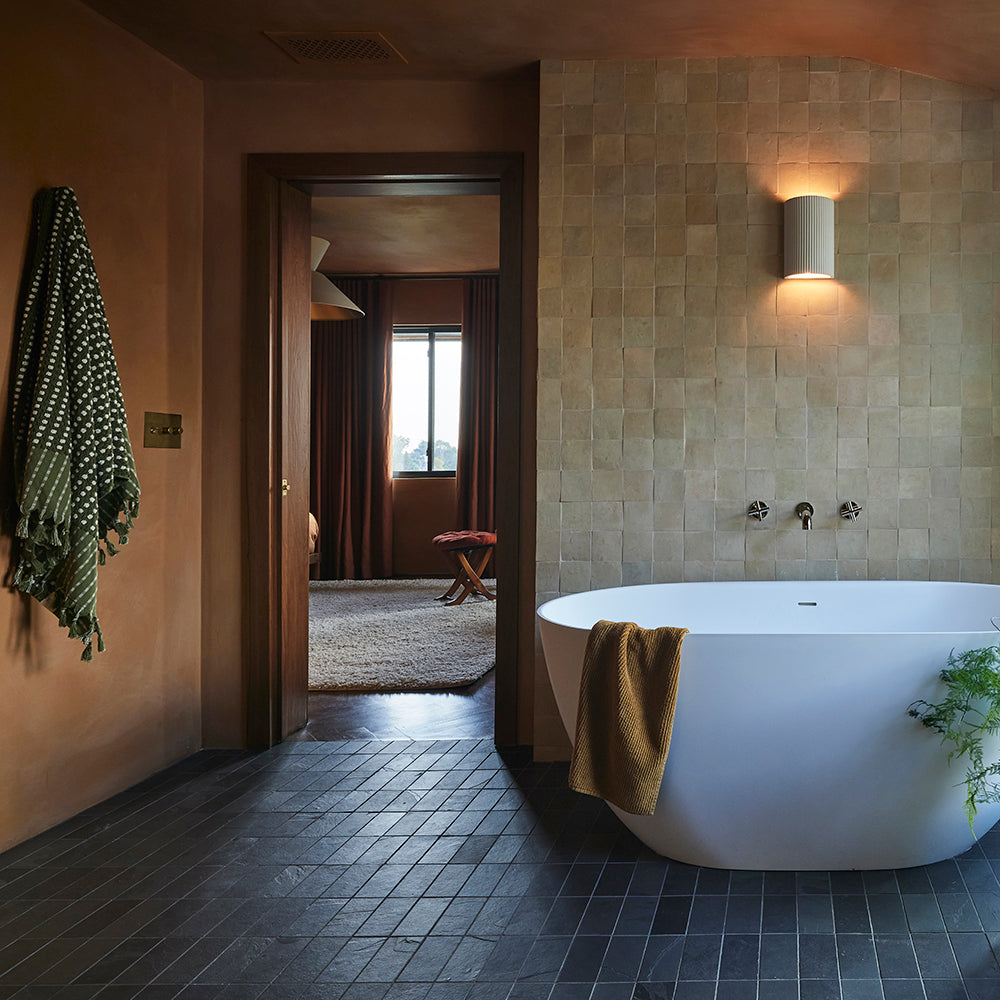
wall: clé zellige 4x4” in natural; floor: slate subway 3x6”. design: jamie haller / photo: jenna peffley
you're thinking about remodeling your bathroom, and while it needs to be practical, of course, you also want it to feel like your own personal getaway. but with so many tile options out there, how do you choose?
just ahead, we’re walking you through the best types of tile for the bathroom (in our humble opinion) along with important factors to consider such as durability, water resistance, maintenance, and slip resistance. whether you prefer the luxe look of natural stone or the rustic, lived-in charm of terracotta, this guide is for you.
which tiles are best for bathrooms?
maybe you’re attracted to the ease of glazed ceramic subway tile — or the earthiness of unglazed terracotta. or perhaps you can’t resist the perfectly imperfect look of handcrafted moroccan zellige. (we’re right with you there.) whatever your taste, you’ll be pleased to know that there are a variety of tile types that function beautifully in bathroom spaces.
ceramic tiles
ceramic tiles — especially those of the glazed variety — are a popular choice for bathrooms. it stands to reason: they're low maintenance and come in a variety of looks. their glazed, nonporous surface resists water damage and stains, which makes everyday cleaning simpler. plus, only the grout needs regular resealing.
keep in mind when working with ceramic tile that it offers less slip resistance. this makes glazed ceramic a better option for walls. if you’re considering glazed ceramic tile for the floor, opt for a smaller tile or have the tile cut down in size to create more grouting.
porcelain tiles
like ceramic tiles, porcelain tiles are an excellent choice for the bathroom. they have a denser, less porous body than ceramic tiles, which makes them even more durable and water resistant. their hard, non-porous surface also means porcelain tiles tend to require less sealing and maintenance than, say, natural stone.
while porcelain can work beautifully on bathroom walls and floors, the same considerations about slip resistance apply here. choose a smaller tile if you’re considering glazed porcelain for the floor. (enter: our porcelain penny rounds.)
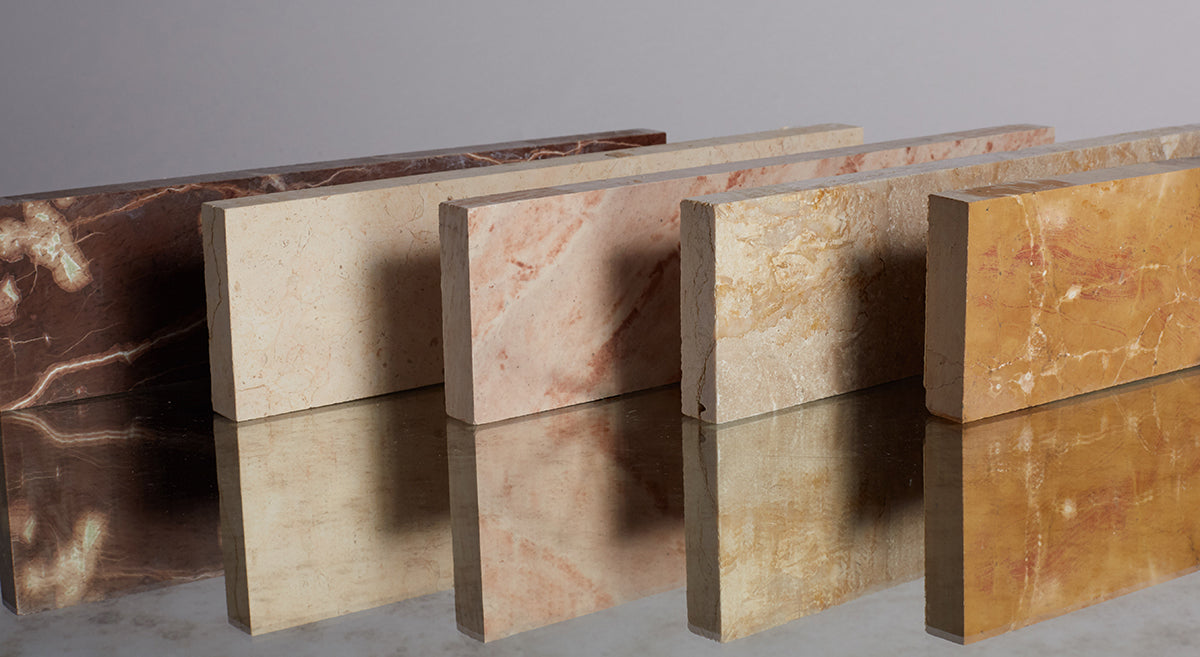
strata linea
natural stone tiles
for a touch of luxury, natural stone tiles such as marble, granite, and slate are stunning options for bathrooms. every piece of natural stone is unique, so stone tiles add visual depth and character like nothing else.
natural stone tile does require regular sealing to prevent staining and may need resealing every few years. it is also more susceptible to damage from substances like soap and hard water. if you’re considering stone for the bathroom — it plays well with both walls and floors — be sure to work with an experienced installer. this is especially true for the shower area, where improper drainage can cause rusting or warping down the road. (it can also cause the tile to always look wet, an early sign of poor drainage.)
zellige tiles
if you want to add warmth and visual interest, we say handmade zellige tiles are a good choice. glazed in vibrant colors and fired in ancient bee-hive kilns, they have an artisanal, handcrafted quality that gives bathrooms a rustic yet design-forward look.
zellige is more prone to chips, cracks, crazing, and variation than other types of bathroom tile, so it isn’t for everyone. in all wet applications, it needs regular resealing in order to protect it from staining. while glazed zellige is more popular for bathroom walls, it can be installed on the floor as well if the tile is smaller in size for slip resistance. unglazed zellige is another great option for the bathroom floor.
terracotta tiles
like zellige tiles, terracotta tiles add warmth, texture, and earthy charm to the bathroom. they are made from natural clay and often left unglazed to celebrate their classic hue. that said, they also come in a world of glazed options. (take eastern earthenware, for example.)
as with any unglazed tile, terracotta needs regular sealing in order to prevent water damage and stains, especially in wet applications. its textured surface also makes it more difficult to clean on a day-to-day basis. more texture does mean greater slip resistance, though, so there’s no need to cut down on tile size if you’re considering terracotta for the bathroom floor.
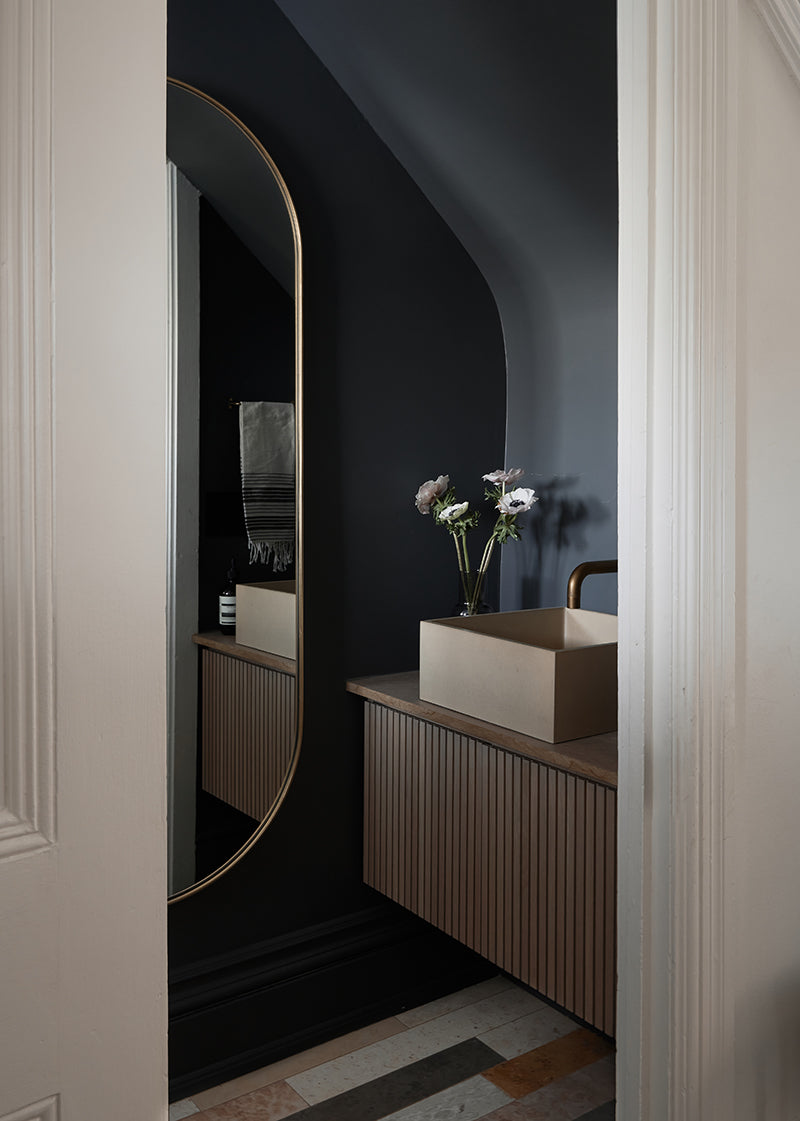
strata linea. design: two fold interiors / photo: lauren miller
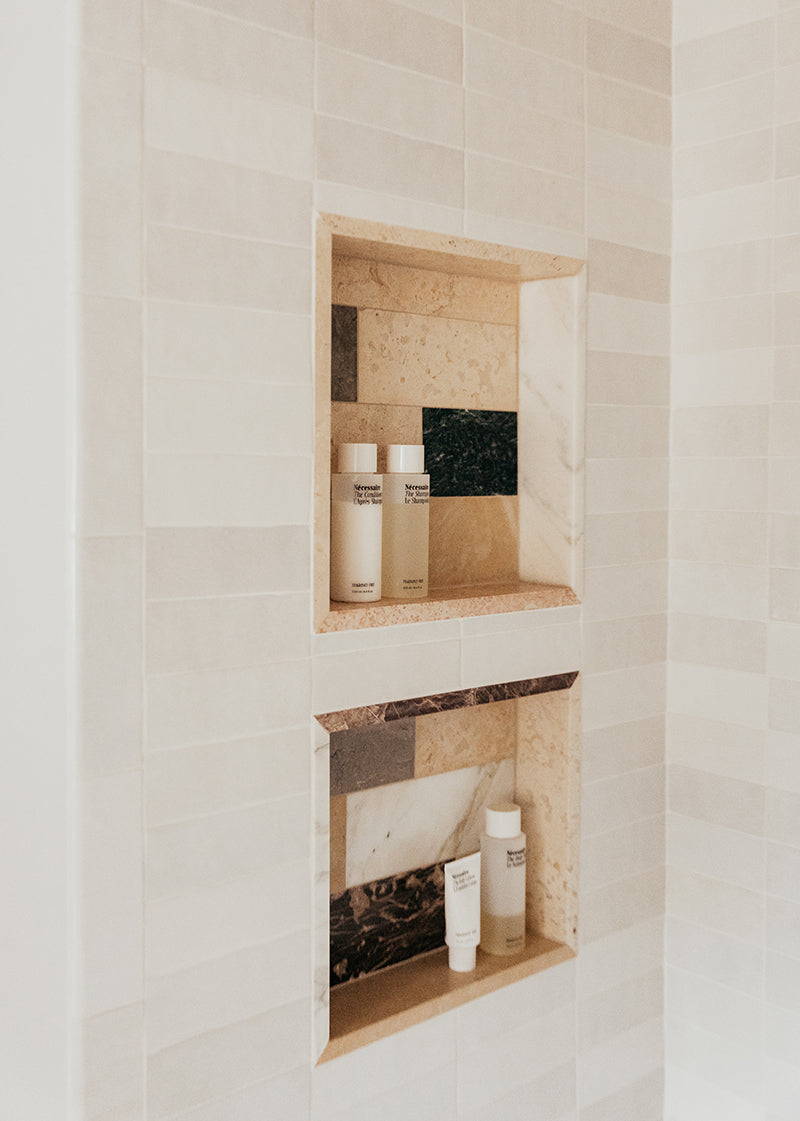
a shower niche in strata linea. design: c. norman designs photo: tyler norman photography
factors to consider when choosing bathroom tile
water resistance
no surprises here: water resistance is a must in the bathroom. glazed ceramic and porcelain tiles stand up to water beautifully on their own, while unglazed stone and terracotta tiles generally need to be sealed with a waterproofing and penetrating sealant.
durability
it’s also important to assess a tile’s durability when selecting tile for the bathroom. this is especially true for floors that will see heavy-foot traffic. any tile’s technical specifications should list out areas where the tile can be safely installed.
maintenance
some tiles require more maintenance than others. glazed porcelain, glazed ceramic, and natural stone tiles tend to be easier to clean due to their smooth surface. a gentle, ph neutral cleaner is usually sufficient here (though keep in mind that stone does need regular resealing). unglazed and textured tile types do not have the same advantage, though they can hide scuffs and scratches more effectively.
slip resistance
slippery tiles in a bathroom can be dangerous, plain and simple. unglazed, textured, and matte glazed tiles offer the most traction, while smooth glazed and polished tiles need special considerations. fortunately, there are workarounds for the latter, including opting for smaller tiles or cutting larger tiles down to a 2-by-2-inch size.
aesthetics
we’ve said it before: this is your bathroom, not the next homeowner’s. only you can decide which factors are the most important to you — and what will ultimately look best.
let your aesthetic preferences guide the way here. no matter what type of tile you’re drawn to, there is likely a way to make it work in your space, whether that means sealing the tile regularly, cutting the tile down to a smaller size, or going with another tile in a similar aesthetic.
answering your frequently asked questions
which tile types look best in a small bathroom?
for a small bathroom, you'll want to choose tiles that visually open up the space. (you might be surprised to hear that larger tiles are often best at this.) light-colored and matte tiles tend to make a room feel more airy and spacious, while dark and glossy tiles can make a small space feel cramped. subway tiles, penny tiles, and mosaic tiles are classic choices that work well in bathrooms of all sizes.
should my bathroom floor and wall tiles match?
matching your bathroom floor and wall tiles creates a clean, cohesive, and monochromatic look. however, it isn’t the only way to give your bathroom a seamless aesthetic. you can also choose complementary tiles for floors and walls that share a similar color palette or texture. for example, try pairing marble subway wall tiles with white porcelain floor tiles. the materials differ, but the color and veining tie the look together.
but there’s no reason to play it safe here. we’ve seen countless bathrooms go bold with different colors and patterns, even checkering different tiles within the same layout. minimalist or maximalist, your tile pairings are up to you.
what tile is best for bathroom showers?
glazed porcelain, ceramic, and terracotta tile are easy choices for shower walls because their smooth, nonporous surface makes them blessedly easy to clean. these tiles are durable, too, and come in a rainbow of glazes and finishes. zellige is also a beautiful option, though it tends to need a little more tlc than other types of glazed tile.
for shower floors, it’s best to use slip-resistant tiles with a matte or textured surface — or smaller tiles that call for more grouting — to prevent falls when the floor is wet.
honed natural stone tiles like marble and slate also work well for showers, but they require sealing in order to prevent staining and water damage. they also require extra care during installation to prevent issues that may be caused by improper sloping and drainage. if a stone tiled shower is in your future, be sure to partner with an experienced professional.
when choosing tile for the bathroom, and especially the shower, always check the tile’s technical specs and material guidelines. these resources will offer much-needed insights not only as you choose your tile but also as you plan to keep your tile looking its best for years to come.
but there’s no reason to play it safe here. we’ve seen countless bathrooms go bold with different colors and patterns, even checkering different tiles within the same layout. minimalist or maximalist, your tile pairings are up to you.
